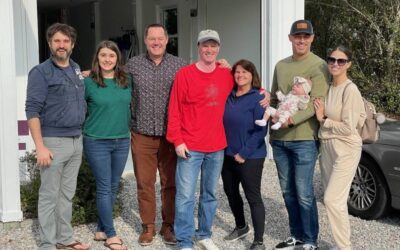At Plum CoOwnership, we have spent hundreds of hours conducting interviews with dozens of co-owners. After all of this research, we have noticed some key takeaways, and used them to put together a Lessons Learned Series.
One of the first things we have realized is that as a group of co-owners, you need to make key decisions up front, and write them down. A good example of this would be conducting a preferences survey within your Group, to find out whether or not your fellow co-owners want the house to be pet-friendly or not. All of these preferences should be captured in a formal document known as an Operating Agreement.
Another key takeaway we’ve had is that every decision must be made through the lens of the Group, not any single individual. This does not mean you should ignore your own needs, but it does mean that you must always be conscious of the preferences of your group members. Unless you feel very strongly about an issue or detail, let your group member win.
Something else that we’ve realized is really helpful is the Red Green Yellow Method. Like a traffic light, this decision making process reminds us to stop, go, or proceed with caution when engaging in conversations with group members. In this process, everyone gets a chance to speak on every issue, using the language “Green,” “Yellow,” or “Red.” Green means “I can support the proposal as stated.” Yellow means “I don’t have enough information to make a decision. Here’s my question…” Red means “I can’t support this as stated, and here’s what I’m concerned about…” The end goal is to work together to get everyone to Green. The Red Green Yellow Method is effective as it stresses clear communication and gives each group member a chance to speak. The method has become increasingly popular in recent years and has proven successful with those who have used it.
Strong Group communication has been proven essential. One thing we’ve noticed that is key in order to have strong communication is being politely direct. If you don’t say what you need, the Group has no way of knowing and can’t help. For example, if one Member is against red curtains in the house, but she doesn’t want to come off as rude or controlling so she chooses not to tell her fellow Group Members, they will have no idea. Now, she will be unhappy and her group members won’t even know why. Instead, the co-owner should send a simple message to her Group Members upfront indicating that she would prefer putting red curtains in the house.
Another key thing to remember is that you must always be aware of changing needs. People get older. Desires and preferences change. As needs change, remember to follow the same practices listed earlier in this article while going through the process of changing things. If you are the group member that wants a change, be aware that you are putting a new set of requirements on your group members and you need to respect their preferences.
Finally, no Group house should be forever. As we’ve said, preferences and needs change, and sometimes the change means the end of a co-ownership agreement. We recommend that groups aim to co-own together for 7 years, but once again, it depends on each Group Members needs and preferences. People will have to leave at some point, and all other group members will have to respect their decision and work with them on it.




